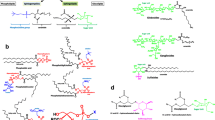Abstract
The earliest emollients in the history of cosmetics were the naturally occurring animal fats and vegetable oils. These provided soothing and smoothing action on the skin and grooming effects on head and beard hair. For the most part, odor problems limited the interest in oils derived from fish. With the increasing sophistication of users and increasing understanding of the technology of these materials, the short-comings of natural fats and oils were overcome in several ways: (a) increased stability through use of antioxidants; (b) reduced odor through improved processing; (c) improved stability and diversification through chemical modification; (d) increased diversity through preparation of derivatives, and (e) substitution of mineral oil. Today the most important single cosmetic use of an unmodified natural fat or oil is that of castor oil as the base for lipsticks. Other unmodified oils have largely minor specialty uses, particularly in higher-priced cosmetics. These include almond oil, apricot kernel oil, sesame oil, safflower oil, wheat germ oil, avocado oil, turtle oil and mink oil. Cocoa butter is used to some extent in suntan products. Reconstituted fractionated coconut oil is widely used. Polyglycerol esters of fatty acids are increasing in importance. Hydrogenation has produced stable oils useful in cosmetics. Alkyl esters and monoglycerol esters of fatty acids offer a wider range of properties than the original oils. Improvements in the naturally occurring fats and oils have made it possible for them to compete in some characteristics, and current interest in “natural” cosmetics may turn the attention of the cosmetic chemist back to improved versions of the classical raw materials.
Similar content being viewed by others
References
Poucher, W.A., “Perfumes, Cosmetics and Soaps,” Seventh Edition, Vol. 2, Chapman and Hall Ltd., London, 1959, p. 3.
McDonough, E.G., “Truth About Cosmetics,” The Drug and Cosmetic Industry, New York, 1937, p. 12.
Sarton, G., “Introduction to the History of Science,” Vol. I, Williams and Wilkins, Baltimore, 1927.
National Formulary, 13th Edition, American Pharmaceutical Association, Mack, Easton, Pa., 1971.
Wall, F.E., “Origin and Development of Cosmetic Science and Technology,” in “Cosmetics Science and Technology,” Edited by E. Sagarin, Interscience, New York, 1957, p. 30.
Pharmacopeia of the United States of America, 18th Edition, U.S. Pharmacopeial Convention, Mack, Easton, Pa., 1971.
“CTFA Standards,” Edited by N.F. Estrin, The Cosmetic, Toiletry and Fragrance Association, Inc., Washington, D.C., 1971.
De Navarre, M.G., “The Chemistry and Manufacture of Cosmetics,” Second Edition, Vol. II, Van Nostrand, Princeton, N.J., 1962, p. 329.
Von Baumann, E., U.S. Patent 2,954,325 (1960).
Douglas, J.S., “The Avocado Pear and Avocado Oil,” in Soap, Perfumery and Cosmetics XLIV(7):446 (1971).
Privett, O.S., “Oxidative Deterioration and Its Prevention in Miscellaneous Products,” in Lundberg, W.O., “Autoxidation and Antioxidants,” Vol. II, Wiley-Interscience, New York, 1962, p. 1005.
De Navarre, M.G., “The Chemistry and Manufacture of Cosmetics,” Second Edition, Vol. I, Van Nostrand, New York, 1962, p. 299.
Norris, F.A., “Fats and Fatty Oils,” in “Encyclopedia of Chemical Technology,” Second Edition, Vol. 8, Wiley-Interscience, New York, 1965, p. 805.
“The Neobee Oils-Cosmetic and Pharmaceutical Applications,” Drew Chemical Corp., Boonton, N.J., 1969.
“Norda Schimmel Briefs,” Edited by R.C. Heald, No. 408, April 1969.
Jellinek, J.S., “Formulation and Function of Cosmetics,” Wiley-Interscience, New York, 1970, p. 115.
“Cosmetic and Pharmaceutical Esters, Surfactants and Emollients,” Drew Chemical Corp., Boonton, N.J, 1969.
De Navarre, M.G., “The Chemistry and Manufacture of Cosmetics,” Second Edition, Vol. II, Van Nostrand, Princeton, N.J., 1962, p. 1.
“New Ingredients in Dispersible Bath Oils,” in Norda Schimmel Briefs, Edited by R.C. Heald, No. 425, November 1970.
Author information
Authors and Affiliations
Additional information
One of five papers in the symposium “Fats and Oils in Cosmetics and Pharmaceuticals,” presented at the AOCS Meeting, Atlantic City, October 1971.
About this article
Cite this article
Berdick, M. The role of fats and oils in cosmetics. J Am Oil Chem Soc 49, 406–408 (1972). https://doi.org/10.1007/BF02582522
Received:
Issue Date:
DOI: https://doi.org/10.1007/BF02582522




